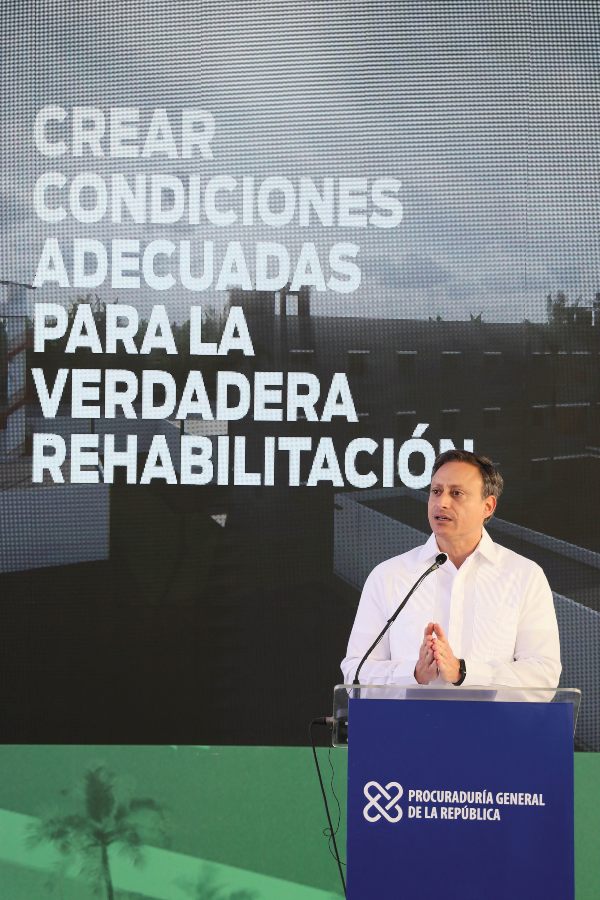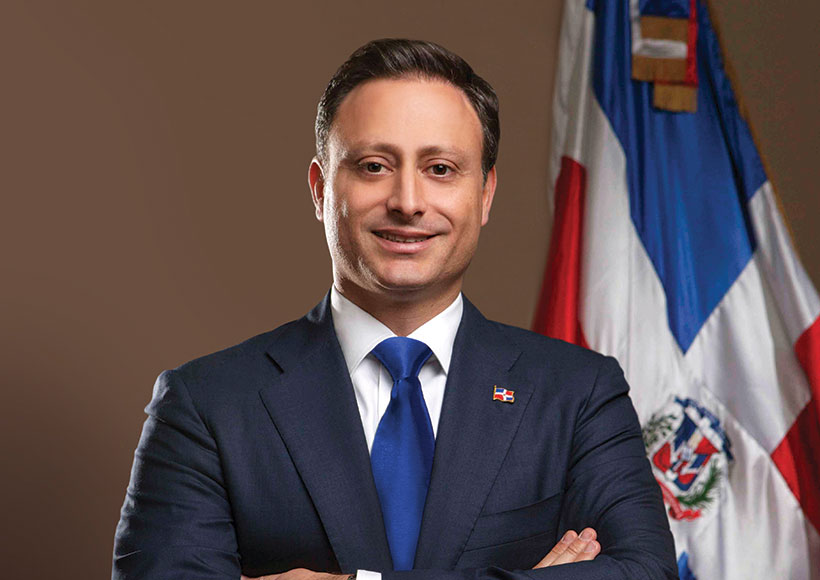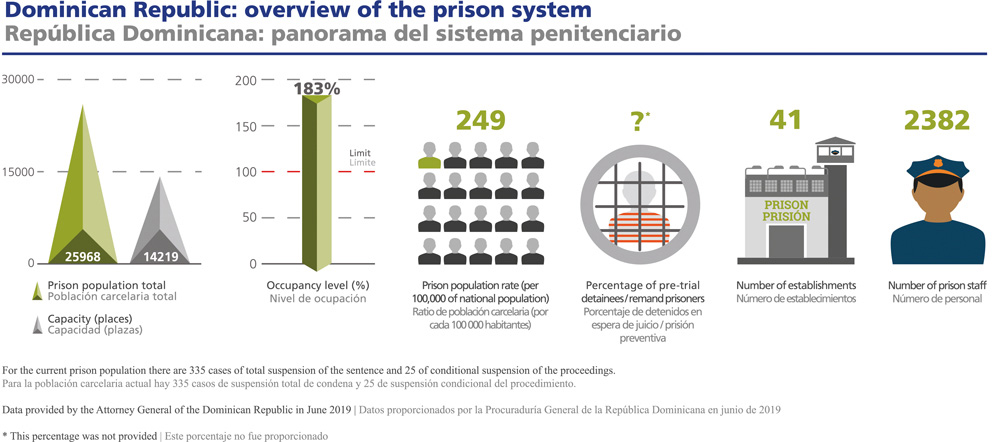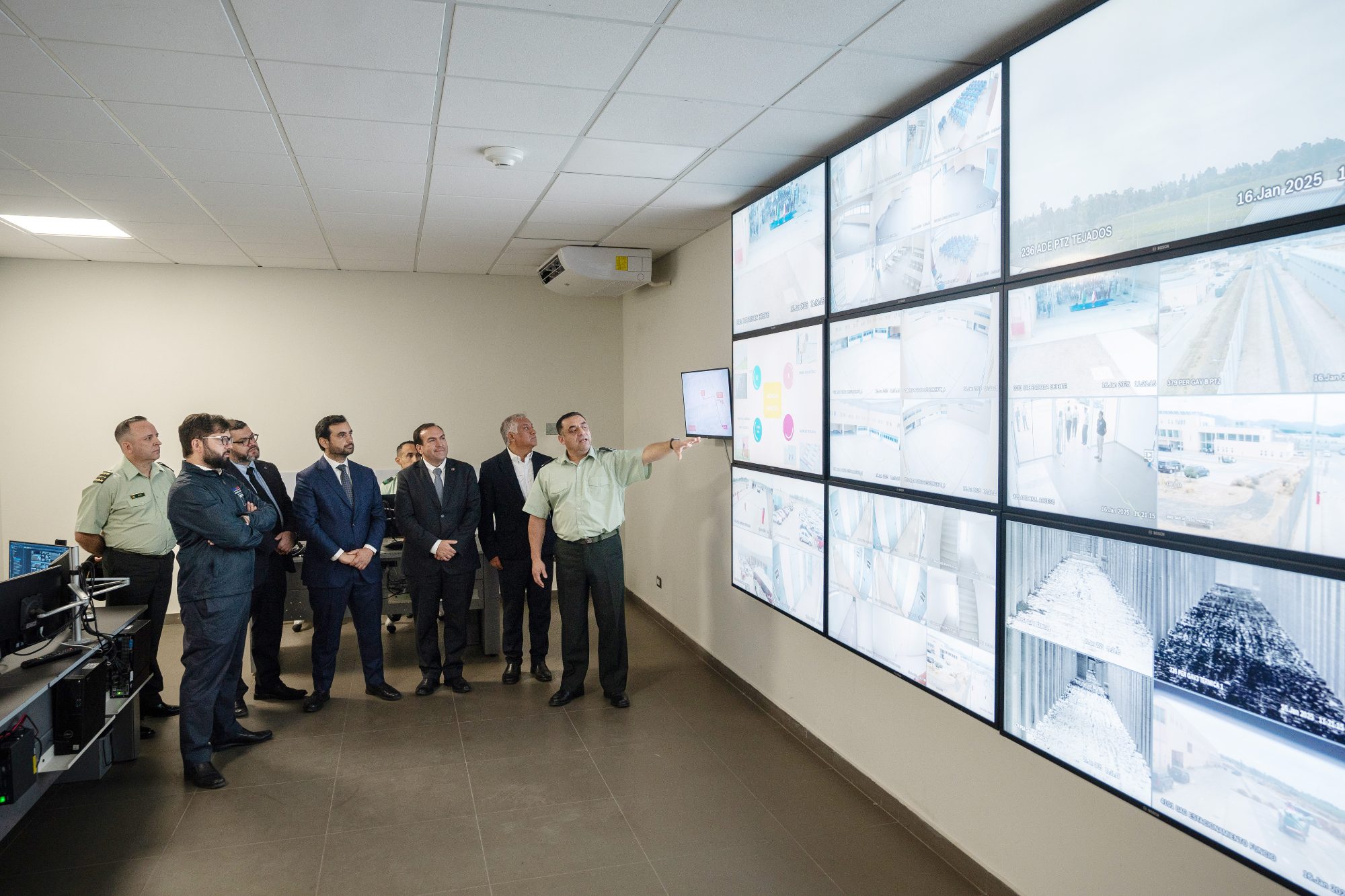// Interview: Jean Alain Rodríguez
Attorney General of the Dominican Republic
JT: March 2019 news reports on the Plan for the Humanisation of the Prison System, which “seeks to create a single model, to guarantee respect for human rights, through a plan to improve infrastructure and rehabilitation and social reintegration programmes that are carried out in 41 prisons in the country” (Source: Office of the Attorney General).
What exactly is the Plan for the Humanisation of the Prison System of the Dominican Republic and on what is it based?
JR: The Plan for the Humanisation of the Prison System, which has been implemented by the Office of the Attorney General, is one of the main infrastructure, education and training projects to be carried out in the country. It has two main axes: one focuses on solving overcrowding and the historical overpopulation of Dominican prisons, while the other focuses on the treatment of inmates, aimed towards their rehabilitation and reintegration into society – although both are closely linked.
Currently, the Office of the Attorney General, through the General Directorate of Prisons and the Prison Management Model, has under its administration a total of 41 prisons, of which 19 belong to the traditional prison system and 22 to the so-called “new model”. The total prison population of the national penitentiary system sometimes exceeds 26,000 inmates, but we only have an installed capacity of 14,219 places. This means that we are talking about an overpopulation of approximately 12,000 inmates; overcrowding is above all a major problem in the traditional model’s prisons.
It is impossible to talk about rehabilitation and reintegration under conditions like those. How can we encourage an individual to recover their dignity and their value in society, if during their time in prison we do not treat them with the dignity and value that we want to promote once they leave the prison?
The Humanisation Plan seeks to solve this problem, starting with the construction of new facilities and the expansion and readjustment of the existing ones, to facilitate this process. In addition, we have more than 500 adolescents in conflict with the law who are incarcerated in comprehensive care centres specifically for young people, who will also receive special treatment under the Humanisation Plan.
JT: To what extent does the Prison System Humanisation Plan relate to the prison reform and the New Prison Management Model that have been put into practice by the Office of the Attorney General for several years?
JR: The living conditions of inmates in Dominican prisons have been a matter of concern to the Dominican authorities for years. The prison reform that began at the beginning of this millennium was an important acknowledgement of the precarious situation in which our inmates lived and of the need for urgent change within the country’s prisons.
With this reform, numerous advances were made, including improving the detention conditions of a significant part of the prison population and implementing training programmes to eliminate idle time in prisons. However, the New Prison Management Model failed to extend to the entire system, leaving us with a dichotomy with serious human rights implications, where some inmates enjoy basic services, while others serve their sentences in deplorable conditions.
This stagnation of the New Prison Management Model, natural over the years, and the high levels of overcrowding and overpopulation in a significant number of prisons, gave rise to the Humanisation Plan, which aims to be the definitive response to these problems, finally managing to unify the traditional model and the so-called “new model” in a single model, renewed and directed entirely towards rehabilitation and social reintegration.
The Humanisation Plan aims to be the definitive response (…) finally managing to unify the traditional model and the so-called "new model" in a single model, renewed and directed entirely towards rehabilitation and social reintegration.
JT: Surely such a profound intervention requires large investments.
What is the level of investment we are talking about and what support does the Attorney General’s Office have to carry out this undertaking?
JR: Since the objective is to seek definitive answers to a decades-long problem this, without a doubt, is an ambitious project. We are talking about an investment of approximately 180 million US dollars (more than €159 million). Part of the funds used in this project comes from the multimillion-dollar fines collected as a result of the prosecution of several notorious corruption cases in the Dominican Republic. So, with this investment, we are turning a negative fact into a positive initiative, giving an example of how effectively combating crime can bear fruit.

JT: To what extent does the Humanisation Plan for Dominican prisons include the implementation of technologies?
JR: Technology will play an important role from the security point of view, with a comprehensive system of integrated security cameras, monitored from a modern control centre in each prison, which will allow to keep under supervision the interior and the perimeter of prison complexes.
Similarly, the lighting and air conditioning of the rooms will be managed through control panels from the control panel located in each housing building – in both new constructions and expansions. To save energy, we will use LED technology for the lights, and as for administrative aspects, we will equip the offices with those computers and servers needed for the storage and handling of the information generated by the centre.
The total prison population of the national penitentiary system sometimes exceeds 26,000 inmates, but we only have an installed capacity of 14,219 places.

JT: Regarding gangs and the phenomenon of organised crime in the criminal justice system, especially in the prison system: How does the Office of the Attorney General deal with this problem? Is there a prison intelligence system (if so, what does it consist of)?
JR: This is certainly a challenge, one that is not exclusive to the Dominican Republic, but which is aggravated in our country precisely by the lack of adequate physical structures to effectively control the large number of inmates we handle, especially those confined in facilities of the traditional model.
In spite of this situation, we can point out that in the New Prison Management Model we have a specialised corps of agents – called Prison Surveillance and Treatment Agents – in charge of the security in the prisons and of maintaining the order, discipline and good behaviour of the inmates.
As part of the actions within the Humanisation Plan, we are working precisely on recruiting and training more of these agents to supply the system as we complete the construction programme and the facilities’ expansion. In this way, by the end of the Plan, all the facilities will have a contingent of this specialised body.
Of course, knowledge of each inmate’s profile is essential to counteract the creation of any criminal organisation within the prison from the outset. Therefore, within the Humanisation Plan, we plan to strengthen the evaluation processes of each inmate at the time of their admission. This will allow us to make more informed decisions about their management and the most appropriate treatment to achieve their rehabilitation.

The Plan for the Humanisation of the Prison System is one of the main infrastructure, education and training projects to be carried out in the country.

JT: If, on the one hand, building, expanding and/or improving the country’s prison infrastructure is favourable, on the other hand, the excessive imprisonment rate remains, with 249 detainees per 100,000 people.
What is your strategy to reduce the prison population, and are there measures to increase sentences and sanctions served in the community without resorting to incarceration?
JR: We are aware that incarceration must be the last resort, which is why we are working intensively on the development of mechanisms for crime prevention, which today is an extremely important axis within criminal policy. For this reason, the Plan for the Humanisation of the Prison System, beyond a construction plan, is a plan aimed at the rehabilitation and social reintegration of the individual. With the implementation of this tertiary prevention policy, we seek to have a long-term impact on criminality and thus reduce the number of inmates in Dominican prisons.
//
At the time of his appointment as Attorney General, in 2016, Dr Jean Alain Rodriguez was the Executive Director of the Dominican Republic Export and Investment Centre (2012-2016). He began his career in public service as Assistant Attorney at the National District Attorney’s Office, to later take on positions such as Ambassador for the Ministry of Foreign Affairs and member of the National Commission on Unfair Trade Practices and Safeguard Measures. In the private sector, he was a legal advisor for institutions such as the Dominican Institute of Telecommunications, the Directorate-General of Customs and the Ministry of Tourism. He holds a Law degree from the Pontificia Universidad Católica Madre y Maestra and has completed three master’s degrees, in the area of Law, at Universities in France and Italy.



